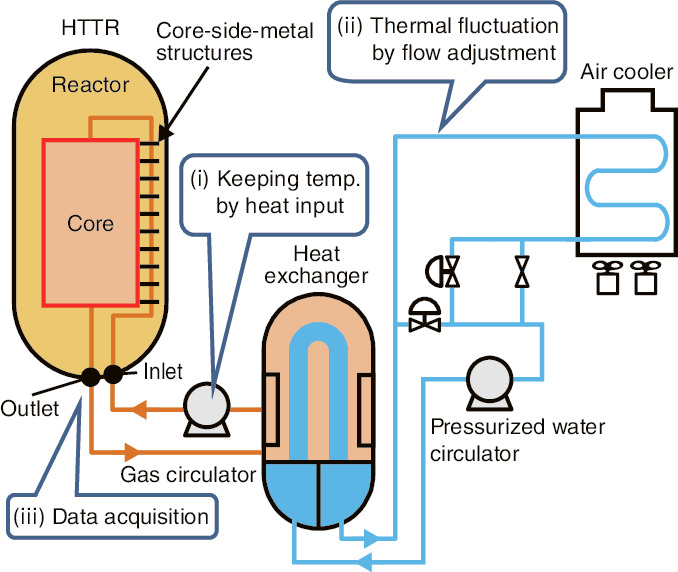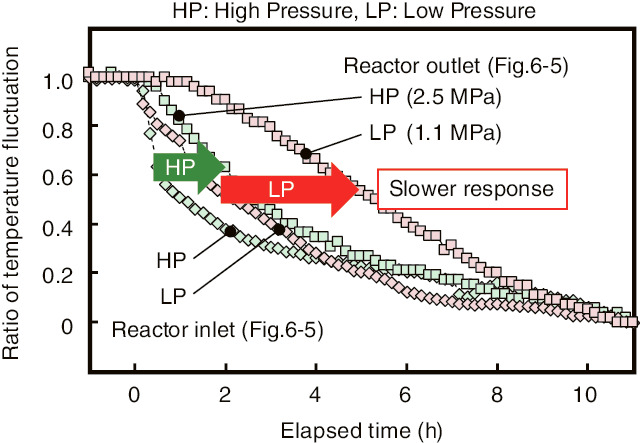
Fig.6-5 Confirmation test of thermal-load-fluctuation absorption against coolant pressure

Fig.6-6 Effect of coolant pressure upon thermal-load-fluctuation absorption
When installing High Temperature Gas-cooled Reactors (HTGRs) connected to hydrogen-production facilities or gas-turbine power-generation systems in isolated locations or developing countries without electric power grids, load-following operation that adjusts the reactor power is required according to heat-utilization demand from the viewpoint of improving economic efficiency. Under load-following operation, the reactor power is adjusted by keeping the reactor-outlet-coolant temperature constant and controlling the mass-flow-rate (inventory) of the coolant by adjusting the coolant pressure. As a result, improving the plant economy by controlling the power according to the demand for hydrogen and electric power is possible.
On the contrary, heat-utilization technologies such as hydrogen-production systems are installed as general industrial systems, not nuclear-reactor systems, in order to improve economic efficiency. Therefore, even when the temperature fluctuation (thermal load) assumed at the abnormal condition in the heat-utilization system propagates to the reactor inlet, it is necessary to indicate that the reactor power and reactor-outlet-coolant temperature do not exceed operational limits. In past studies, it has been found that in the state of high coolant pressure during rated operation, this thermal load is absorbed and suppressed by a heat-transfer-promoting effect due to irregularities in the core-side-metal structures (thermal-load-fluctuation absorption) and that the core-side-metal structures work as buffer for the thermal load to prevent sudden temperature changes in the core. Thus, the reactor-power adjustment against temperature fluctuation of the core works smoothly, and the reactor power and outlet-coolant temperature are stabilized. However, since the heat-transfer coefficient decreases at low coolant pressure under inventory control, it is necessary to check whether the same mechanism works effectively.
In the case of the lower coolant pressure under inventory control, based on previous findings that (1) the temperature fluctuation of the core-side-metal structures becomes slow due to a decrease in the heat-transfer coefficient of the coolant and (2) the heat capacity of the coolant decreases due to a decrease in the mass-flow rate, improving the temperature followability of the coolant to the structures, we predicted that the fluctuation of the reactor-outlet-coolant temperature should become slower than that of higher coolant pressure. Then, to confirm this prediction, test data on thermal-load-fluctuation absorptivity of the reactor were acquired using the High Temperature engineering Test Reactor (HTTR) under different coolant pressures (1.1 and 2.5 MPa), with heat input from the gas circulator; the reactor-inlet-coolant temperature was decreased by approximately 30 ℃ (Fig.6-5).
As a result of the test, we confirmed that the thermal-load-fluctuation absorbability at low pressure is superior to that at high pressure (Fig.6-6). Toward realization of load-following operation of HTGRs, the load-fluctuation absorbability under different coolant pressures was clarified.